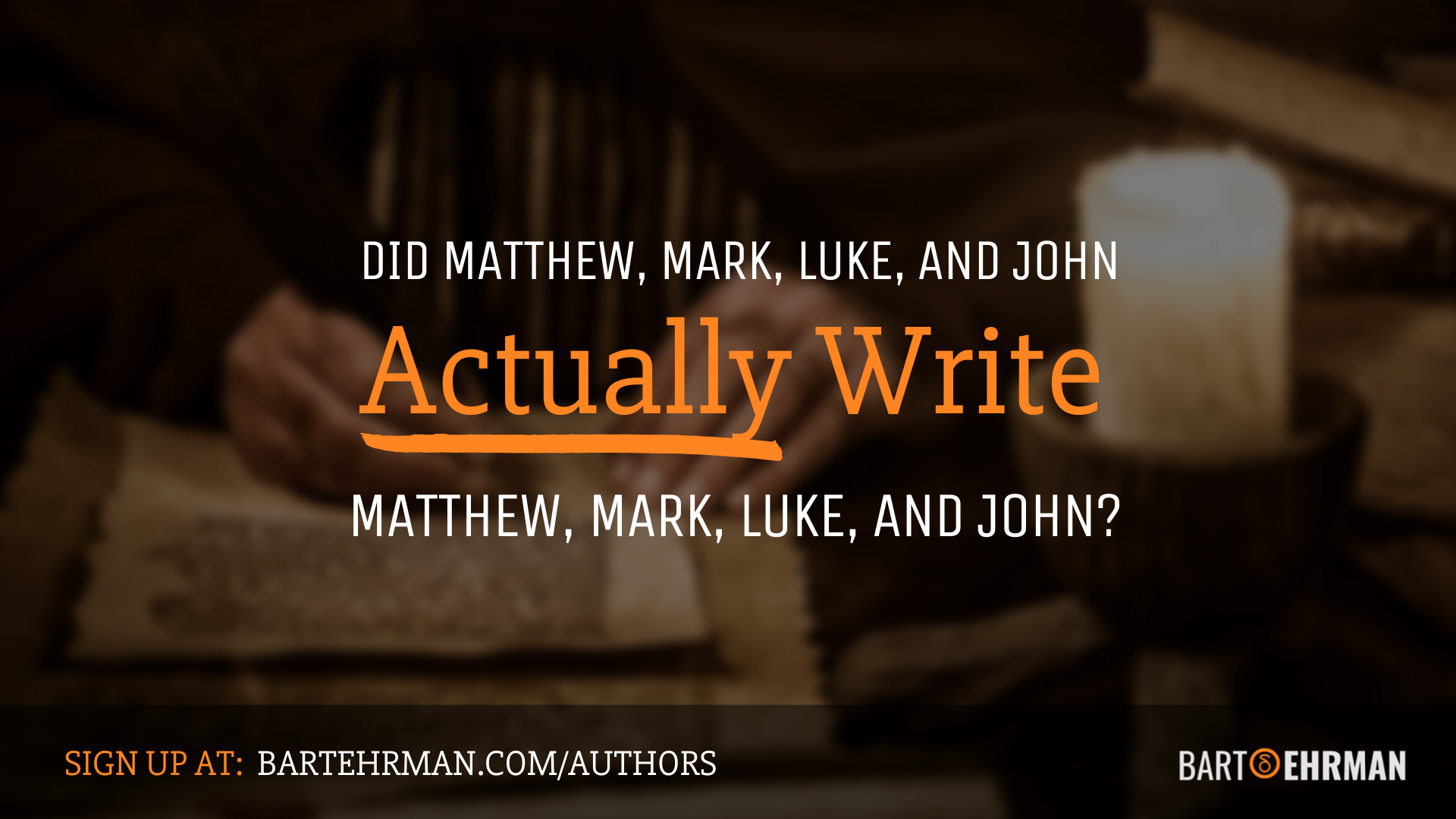Tanakh: Meaning and Books Included in the Jewish Bible

Written by Marko Marina, Ph.D.
Author | Historian | BE Contributor
Verified! See our guidelines
Verified! See our editorial guidelines
Date written: July 27th, 2024
Disclaimer: The views and opinions expressed in this article belong to the author and do not necessarily match my own. - Dr. Bart D. Ehrman
A well-known story in rabbinic literature recounts how a potential convert to Judaism approached two rabbinic sages of the 1st century B.C.E., asking to be taught the entire corpus of Jewish teachings while standing on one foot.
The first rabbi, Shammai, found the request frivolous and struck the inquirer with a rod he was holding. The other sage, Hillel, responded differently. He recited a single line he believed encapsulated the essence of Judaism and suggested that all the rest was merely commentary, urging the potential convert to study it nonetheless.
This story highlights the importance of teaching and Scripture in Judaism. As a “religion of a book,” Judaism places great emphasis on the literary tradition of its ancestors. At the heart of this literary tradition lies the Tanakh, the Jewish holy book.
The Tanakh isn’t just a collection of religious texts; it’s a foundational document that shapes Jewish identity, law, and spirituality.
Understanding the Tanakh is essential for anyone interested in Judaism’s historical and religious development. This article will delve into the meaning of the Tanakh, explore the books included in it, and discuss how it came to be.
We’ll also address some common terminological confusions that arise when discussing the Tanakh. Terms like "Pentateuch," "Torah," and "Hebrew Bible" are often used interchangeably with "Tanakh," but they aren’t synonymous.
By the end of this article, you will have a comprehensive understanding of the Tanakh and its significance in both Jewish and Christian contexts. And no, I won't reveal which line Hillel cited — consider it a little mystery to pique your interest as we delve into the rich world of Judaism.
But before we begin, consider exploring “In the Beginning: History, Legend, and Myth in Genesis”, Bart D. Ehrman’s excellent course! This course offers a scholarly analysis of some of the most famous stories from the Bible, including the creation of the world and Noah's flood. You won’t be disappointed!

Tanakh: Definition and the List of Books
The centerpiece of Judaism — encompassing its beliefs, rituals, and laws — is the Hebrew Bible. While the term “Bible” originated among Christians and is used by English-speaking Jews today, it often leads to confusion. Christians refer to both the Hebrew Bible and the New Testament as the Bible, while Jews use the term exclusively for the Hebrew Bible.
Among many Jews today, a more common designation for the Jewish Bible is the Hebrew acronym “Tanakh.” It represents the three major components of the Hebrew Bible: Torah, Nevi'im, and Ketuvim.
The first part of the Tanakh, the Torah, is also known as the Five Books of Moses or the Pentateuch. The Torah holds the highest prestige and sanctity in Judaism, with traditional Jews believing it was given in its entirety to Moses at Mount Sinai. The Torah is also read regularly as part of synagogue rituals, a practice that likely predates the institution of public prayer.
The second section, Nevi'im, or "Prophets," covers the period from Israel’s settlement in Canaan to the destruction of the First Temple in 586 B.C.E. While some books within Nevi'im contain historical narratives, the majority feature the exhortations of the prophets to their contemporaries, urging them to adhere to their covenant with God.
The third part, Ketuvim, or "Writings," is a diverse collection of literary genres including wisdom literature, poetry, and historical works. The largest book in this section is the Psalms.
Ketuvim also includes the five “scrolls,” which are the Book of Esther, the Song of Songs, Lamentations, Ecclesiastes, and Ruth, each read in synagogues on specific festival days. Other notable books in this section are Job, Proverbs, Daniel, Ezra-Nehemiah, and the two Books of Chronicles.
In An Introduction to Judaism, Nicholas de Lange notes: “The authority of these various books, the most ancient works to have come down to us in the Jewish tradition, is enormous. However, the different books enjoy different kinds and levels of authority, and different sectors of Jewry have different understandings of the claims the books exert on Jews today.” (Affiliate Disclaimer: We may earn commissions on products you purchase through this page at no additional cost to you. Thank you for supporting our site!)
To provide a clear overview, here is a table illustrating the books included in the Jewish Bible.
Section | Books |
|---|---|
Torah (Law) | Genesis, Exodus, Leviticus, Numbers, Deuteronomy. |
Nevi'im (Prophets) | Joshua, Judges, Samuel (1 & 2), Kings (1 & 2), Isaiah, Jeremiah, Ezekiel, The Twelve Minor Prophets (Hosea, Joel, Amos, Obadiah, Jonah, Micah, Nahum, Habakkuk, Zephaniah, Haggai, Zechariah, Malachi). |
Ketuvim (Writings) | Psalms, Proverbs, Job, Song of Songs, Ruth, Lamentations, Ecclesiastes, Esther, Daniel, Ezra-Nehemiah, Chronicles (1 & 2) |
This table summarizes the structure and content of the Tanakh, thus providing a comprehensive understanding of the Jewish holy book and its essential role in Judaism.
Summarizing the importance of the Tanakh, Christopher Partridge concludes:
“Judaism’s sacred texts, then, can be envisaged as concentric circles: The innermost three circles are the Tanakh, at the very center, Torah, followed by Nevi’im (the prophets), and Ketuvim (the writings). After that come Mishnah, Talmud, and Midrash (‘commentary’) – the ongoing tradition of commentary and critique, a potentially never-ending circle that includes all texts that manage to become, in some way, of existential value to the Jewish community.”
Terminological Clarifications
Since Christianity emerged out of Judaism, there have been some misunderstandings concerning particular terms and concepts. In the next section, we’ll clarify these terminological differences, thus comparing the Tanakh with terms such as “Pentateuch,” "Torah,” “Hebrew Bible,” and the “Old Testament.”
Tanakh vs. Pentateuch
The term "Pentateuch" refers specifically to the first five books of the Hebrew Bible: Genesis, Exodus, Leviticus, Numbers, and Deuteronomy. These books are also known collectively as the Torah or the Five Books of Moses.
The Pentateuch forms the foundational legal and narrative framework of the Jewish faith, detailing the creation of the world, the history of the early patriarchs, the Exodus from Egypt, and the establishment of the covenant between God and Israel at Mount Sinai.
In the Introduction to the Pentateuch, R. Norman Whybray rightly points out that the Pentateuch has always been an essential part of the Holy Scripture. He explains: “For the Jews, it holds the first and most authoritative place in their Scriptures.”
While the Pentateuch is a crucial part of the Tanakh, it represents only the first section. The Tanakh, as we saw, also includes the Prophets (Nevi'im) and the Writings (Ketuvim), making it a more comprehensive collection of Jewish scriptures.
Tanakh vs. Hebrew Bible
The "Hebrew Bible" is a term often used interchangeably with "Tanakh," particularly in academic and interfaith contexts. It refers to the same collection of texts as the Tanakh: the Torah, the Nevi'im, and the Ketuvim.
It’s more often used in Christian circles to designate the corpus of holy books that Jews use. Jews, themselves, are more inclined to use the term “Tanakh”. However, essentially, these terms are synonymous.
Tanakh vs. Torah
Here, things get a little bit tricky. The "Torah" has a dual meaning in Jewish tradition. In its narrow sense, it refers to the Pentateuch, the first five books of the Hebrew Bible. So, this would also be an example of two synonymous terms.
In a broader sense, however, the Torah can mean the entire body of Jewish teachings, including the Tanakh, the Talmud, and other rabbinic literature. As it turns out, Jews continued to produce books throughout much of the Second Temple period and beyond.
The most important of those is the so-called “Rabbinic corpus,” which includes the Books of Midrash (a sort of commentary on the Hebrew Bible not limited to the scriptural interpretation) and two major legal texts: The Mishna (completed in the early 3rd century C.E.) and the Talmud (finished a few centuries later).

Tanakh vs. Old Testament
The term “Old Testament” is primarily used in Christianity to refer to the collection of books that overlap significantly with the Tanakh. However, there are notable differences in the organization, canonization, and interpretation of these texts.
The Christian Old Testament typically follows the order and divisions found in the Septuagint (Greek translation). Furthermore, in some Christian denominations (e.g. the Catholic Church), the Old Testament also includes additional (apocryphal) books that are not part of the Jewish holy book.
While the content of the books in the Jewish Tanakh and the Christian Old Testament largely overlap, the differences in structure and the inclusion of additional texts reflect the distinct theological and historical developments of Judaism and Christianity.
These clarifications help to delineate the specific meanings and usages of terms related to the Jewish holy book and provide a clearer understanding of how the Tanakh fits within the broader landscape of religious texts.
However, it's not just the inclusion of the Old Testament Apocrypha that separates Christianity and Judaism. As many people know, the Christian Bible also contains the New Testament, leading to an important question: Why do Jews adhere strictly to the Tanakh and reject the New Testament?
Tanakh and the Christian Bible: Why Do Jews Reject the New Testament?
Despite the diversity of writings in the New Testament, as highlighted in James D. G. Dunn's book, one constant remains: These documents center around the figure of Jesus, the cornerstone of Christianity.
To comprehend why Jews reject the New Testament, we must first understand their reasons for rejecting Jesus and, by extension, Christianity. The primary issue for Jews, as the Apostle Paul termed it, was the "stumbling block" of the Christian claim that Jesus is the risen Messiah.
Did the Early Christian Mission to Jews Really Fail?
Rodney Stark, in his book The Rise of Christianity, challenges the conventional view that early Christian missions to Jews failed. Stark argues that a significant number of early Christian converts during the 2nd, 3rd, and 4th centuries were Hellenized Jews residing in urban centers of the Roman Empire.
However, Stark's theory doesn’t convince me. If the mission to the Jews had been as successful and active until the 5th century as Stark suggests, we would expect to find substantial evidence in historical sources, rather than relying solely on theoretical sociological principles. Just to give one example: A “Sitz im Leben” analysis (understanding the context and life setting in which the gospels were originally used) of the Gospel of John reveals clear elements of anti-Judaism, reflecting the significant falling out between the Jewish and Christian communities at the end of the 1st century.
Overall, while Stark's theory is intriguing, it lacks robust support from primary sources, making it less convincing in the broader historical narrative.
For many Christians today, it may seem self-evident that Jesus is the Messiah. However, this belief clashes with the initial (Jewish) understanding of the term "Messiah." In ancient Jewish tradition, the Messiah was envisioned as a future king of Israel — an anointed human leader, not a divine (resurrected) figure.
This concept traces back to 2 Samuel 7:13-16, where God promises David that his descendants will always sit on the throne. Jewish expectations of the Messiah varied, with some envisioning a supreme priest or a great military leader, but none anticipated a divine Messiah.
Crucially, no Jewish texts or traditions suggest the Messiah would die for others' sins and be resurrected. This idea arose from early Christian interpretations of Jesus' life and resurrection, not from Jewish scripture.
In the Tanakh, there are no references to a Messiah who dies and rises again. Jewish interpreters of these texts never conceived of such a fate for the Messiah. Instead, the Messiah was expected to be a powerful leader who would overthrow Israel's enemies and establish God's kingdom on Earth.
Joseph Telushkin, in Jewish Literacy, emphasizes this point:
“In the first centuries of the Common Era, the word 'Messiah' had a different meaning than it has today. Contemporary believers usually think of the Messiah as a wholly spiritual figure. Then, it meant a leader who would free the Jews from foreign (i.e., Roman) rule, bring them back from the four corners of the earth, and usher in an age of universal peace.”
Given these expectations, it’s unsurprising that most Jews rejected the "good news" proclaimed by early Christians. To them, the idea that the Messiah was an obscure figure from Nazareth who suffered a humiliating death by crucifixion was inconceivable.
This fundamental difference in messianic expectations contributed significantly to the Jewish rejection of Jesus and the New Testament.
According to most scholars, the early Christian mission to convert Jews largely failed. Bart D. Ehrman, in his book The Triumph of Christianity, notes that, by the end of the 1st century, most converts to Christianity came from pagan backgrounds. This shift underscores the growing divide between Judaism and the nascent Christian faith.
By the end of the 4th century, the parting of ways between Judaism and Christianity was well established, solidifying the distinction between the Tanakh and the Christian Bible — particularly the New Testament.
One of the most influential Jewish philosophers of the 12th century, Maimonides, encapsulated Jewish beliefs in his famous 13 Principles of Faith. The seventh principle states:
“I believe by complete faith that the prophesy of Moses our teacher, may peace rest upon him, was true and that he was the father of all prophets that preceded him as well as all that came after him.”
The eighth principle asserts:
“I believe by complete faith that this is the Torah, and it shall not be changed and it shall not be replaced with another from the Creator, blessed be His name.”
These principles directly contradict the roles ascribed to Jesus and the New Testament in Christianity. Maimonides' principles were even incorporated into Jewish prayer books and inspired the popular “Yigdal hymn,” still sung in synagogues today.
Maimonides’ principles highlight the enduring Jewish commitment to the Tanakh, thus reinforcing the rejection of any subsequent revelations, including the New Testament.
This unwavering dedication to the Tanakh has been a defining feature of Jewish identity and belief throughout the centuries. Understanding this context clarifies why Jews have maintained their distinct religious path, grounded in the ancient scriptures of the Tanakh, while Christianity developed its unique trajectory with the inclusion of the New Testament.
Conclusion
In conclusion, the Tanakh stands as the bedrock of Jewish religious life, encompassing its beliefs, rituals, and laws. It’s a rich tapestry of texts that have been revered, studied, and interpreted for millennia.
Through understanding the structure and content of the Tanakh, as well as the nuanced differences between related terms like Pentateuch, Torah, Hebrew Bible, and Old Testament, we gain a deeper appreciation for its significance in both Jewish and Christian traditions.
Moreover, the divergence between Judaism and Christianity, particularly regarding the acceptance of the New Testament, highlights fundamental theological differences. The Jewish expectation of the Messiah contrasts sharply with Christian beliefs about Jesus.
As we wrap up this exploration of the Tanakh, I must confess that I can’t leave you in suspense any longer.
Out of the goodness of my heart, I've changed my mind about revealing the line Hillel quoted. When asked to summarize the entire Torah while standing on one foot, Hillel replied: “What is hateful to you, do not do to your fellow man.” A timeless message, and one we should all strive to uphold.
FREE COURSE!
WHY I AM NOT A CHRISTIAN
Raw, honest, and enlightening. Bart's story of why he deconverted from the Christian faith.
Over 6,000 enrolled!

